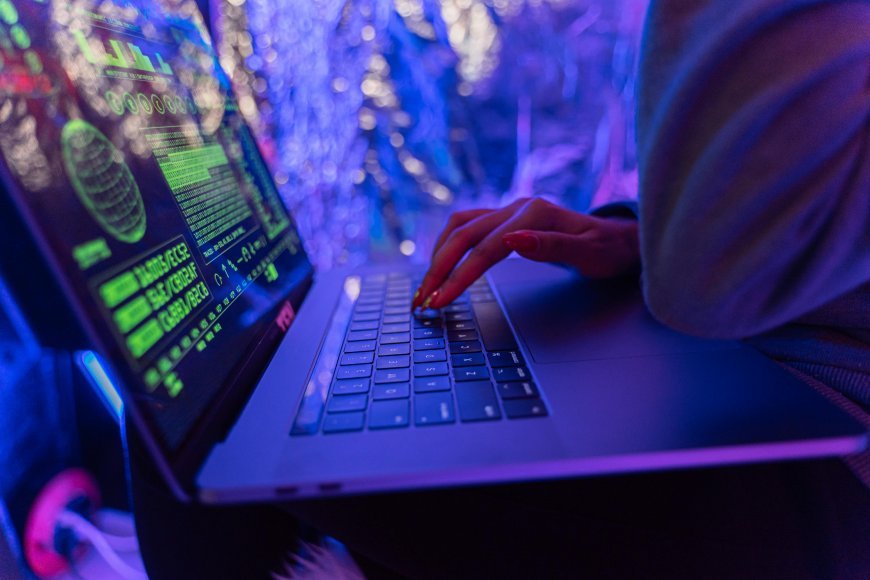Cyber Forensics: Revealing the Digital Reality Behind Cyber Crimes

In this hyperconnected virtual age, the sector is powered via way of means of statistics. From emails and online banking transactions to touchy company communications, almost every detail of our lives is digitalized. With this growing reliance on generation comes the unpleasant side — cybercrimes. Whether it's miles statistics breaches, identity robbery, or ransomware attacks, cybercriminals end up with an increasing number of state-of-the-art tools via means of the day. That is wherein Cyber Forensics comes into play as a critical field that digs out the facts buried within the depths of virtual proof.
What is Cyber Forensics
Cyber Forensics, or virtual forensics, refers to the technique of gathering, examining, and safeguarding digital proof in a way that is admissible in a courtroom. The purpose is to study virtual crimes and get better beneficial proof from computers, mobile phones, servers, and cloud computing platforms.
It is vital in each crook and civil investigations — from tracking down hackers who smash into networks to locating virtual proof in instances of fraud or robbery of high-end property. While normal forensics is involved with tangible proof, Cyber Forensics is involved with digital trail — files, metadata, log records, emails, and even erased facts.
The Importance of Cyber Forensics in Today`s World
As corporations continue to digitize their activities, they end up increasingly prone to attacks. Cyberattacks occur every 39 seconds worldwide, in step with cybersecurity reports. Companies now no longer handiest lose cash but also their reputation and the believe of their customers.
This is why Cyber Forensics has now become a requirement, no longer an option. In the event of a safety breach, cyber forensics specialists help in figuring out how the breach occurred, who became involved, and what facts were lost. The proof accrued may be used later at some stage in courtroom lawsuits to ensure responsibility in addition to justice.
In addition, it enables to enhancement of cybersecurity policies. From the evaluation of assault styles and weaknesses, companies can enhance their protection structures in order that such occurrences do now no longer appear in the future.
Main Steps within the Cyber Forensics Process
The Cyber Forensics technique follows a scientific, in addition to a legally compliant method, to preserve statistical integrity. The following are the important steps involved:
1. Identification – Identify possible assets of virtual statistics like tough drives, emails, cellular phones, or cloud storage.
2. Preservation – After identification, the statistics are preserved in their authentic state. This is executed via way of means of making particular copies (forensic images) in order that the authentic proof isn't changed.
3. Collection – Investigators accumulate all possible statistics the use of committed equipment at the same time as maintaining a chain of custody.
4. Examination – Here, the accrued statistics are tested to retrieve erased, deleted, or encrypted facts that can be used as proof of the crime.
5. Analysis – The consequences are then interpreted via way of means of specialists, statistics is correlated, and the chain of virtual activity previous to the occasion is reconstructed.
6. Presentation – Lastly, the findings are documented and supplied in a complete document that may be applied in crook or inner research proceedings.
Each level should be done with accuracy and compliance with criminal claims to ensure that the evidence remains acceptable in court.
Cyber forensic equipment and technology
To find virtual proof, investigators depend on loads of superior equipment and technology. Popular Cyber Forensics equipment includes:
EnCase – Used for forensic evaluation of difficult drives and detachable media.
FTK (Forensic Toolkit) – Assists in statistical imaging, password healing, and decryption.
Autopsy – A loose disk picture evaluation and deleted report healing tool.
Wireshark – A community protocol analyzer used for taking pictures and inspecting statistics packets.
Volatility – Employed for reminiscence forensics and RAM statistics evaluation.
These are supplemented through strategies that include keyword searching, statistics carving, metadata evaluation, and email header tracing to extract and authenticate proof effectively.
Cyber Forensics in Law Enforcement
World over, law enforcement organizations use Cyber Forensics appreciably to pursue loads of crimes, ranging from cyber terrorism to monetary fraud. In virtual proof cases, the proof of forensic professionals could make or break a case.
For instance, in a hacking case, investigators can trace the IP address used throughout the assault, get better deleted logs, or examine verbal exchanges among suspects. In infant exploitation or harassment cases, forensic evaluation can retrieve chat histories, images, and vicinity statistics that assist in convicting offenders.
In company settings, Cyber Forensics is just as important. Companies appoint it to behavior inner threats investigations, highbrow belongings robbery or unauthorized statistics get right of entry to investigations. With growing statistics safety compliance demand (which includes GDPR or India`s Digital Personal Data Protection Act), upholding sturdy forensic features is now an important hazard control component.
Challenges in Cyber Forensics
Notwithstanding its importance, Cyber Forensics poses a few challenges:
Encryption and Anonymity: Most cybercrooks employ state-of-the-art encryption and nameless systems, which include Tor, with which it difficult to track.
Emerging Technology: As new technologies, which include IoT and cloud computing, evolve rapidly, forensic specialists need to replace their talent units and equipment continually.
Amount of Data: The massive extent of statistics created each day makes it time-consuming to extract proof.
Legal and Jurisdictional Issues: Cybercrimes regularly cross global boundaries, main to complicated criminal headaches concerning proof sharing and privacy laws.
The Future of Cyber Forensics
With the development of the generation comes the increase in Cyber Forensics as well. Artificial Intelligence (AI) and Machine Learning (ML) are increasingly being integrated into forensic evaluation to perceive anomalies quickly and forecast assault styles. Cloud forensics and blockchain forensics are new subareas that address crimes in virtualized and decentralized spaces.
Automation and AI-based equipment will help investigators process massive datasets greater quickly and pick up on styles that human analysts couldn't spot withinside the future.
Conclusion
In a global world wherein records have emerged as the brand new currency, their safeguarding is of extreme importance. Cyber Forensics is a digital detective that reveals the proof that lies hidden in devices, servers, and networks. Identifying, retaining, and examining virtual records aids law enforcement, corporations, and people in bringing cybercriminals to face justice.
With cyber assaults growing each day, making an investment in Cyber Forensics is not a choice — it`s an important protection measure for instilling trust, protection, and duty online. The global of following day belongs to the folks who now no longer best steady records but also tune and set up the way it turned into hacked, and Cyber Forensics is right at the center of it all.
What's Your Reaction?
 Like
1
Like
1
 Dislike
0
Dislike
0
 Love
0
Love
0
 Funny
0
Funny
0
 Angry
0
Angry
0
 Sad
0
Sad
0
 Wow
0
Wow
0




























